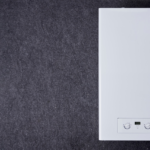In today’s hyper-connected world, it’s easy to feel overwhelmed by the constant barrage of notifications, emails, and social media updates. However, taking time to unplug and disconnect from digital devices can be essential for maintaining mental wellness and finding balance in our lives. In this lifestyle post, we’ll explore the benefits of digital detoxing and share practical tips for incorporating this practice into your daily routine.
1. Recognizing the Need for Digital Detox
Many of us spend hours each day glued to screens, whether it’s for work, entertainment, or socializing. However, excessive screen time has been linked to a host of negative effects on mental health, including increased stress, anxiety, and depression. Recognizing the need to unplug and disconnect is the first step towards reclaiming control over our digital lives and prioritizing our mental well-being.
2. Setting Boundaries with Technology
Setting boundaries with technology is essential for achieving a healthy balance between digital engagement and real-life experiences. Consider establishing designated times and spaces for using digital devices, such as turning off screens an hour before bedtime or implementing “no-phone zones” in certain areas of your home. By creating clear boundaries, you can reduce the temptation to constantly check your devices and cultivate a greater sense of presence and mindfulness in your daily life.
3. Engaging in Offline Activities
Digital detoxing provides an opportunity to reconnect with offline activities and hobbies that bring joy and fulfillment. Whether it’s reading a book, going for a walk in nature, practicing yoga, or spending quality time with loved ones, engaging in activities that don’t involve screens can help you recharge and rejuvenate your mind, body, and spirit. Make a conscious effort to prioritize these offline activities and savor the moments of peace and quiet they provide.
4. Practicing Mindfulness and Presence
Mindfulness is the practice of paying attention to the present moment with openness, curiosity, and acceptance. Digital detoxing offers an opportunity to cultivate mindfulness by tuning into your senses, noticing your thoughts and emotions, and being fully present with whatever you’re doing. Whether you’re eating a meal, taking a shower, or simply sitting in silence, practice being fully present and attentive to the experience at hand.
5. Reconnecting with Yourself
Finally, digital detoxing allows you to reconnect with yourself on a deeper level and tune into your inner thoughts, feelings, and intuition. Take time each day to engage in self-reflection, journaling, or meditation, allowing yourself to explore your inner landscape and gain insight into your values, desires, and aspirations. By reconnecting with yourself, you can cultivate greater self-awareness and authenticity, leading to a more fulfilling and purposeful life.
Conclusion: Finding Balance in a Hyper-Connected World
In conclusion, digital detoxing offers a powerful antidote to the stress and overwhelm of modern life, allowing us to reclaim our time, attention, and mental well-being. By setting boundaries with technology, engaging in offline activities, practicing mindfulness and presence, and reconnecting with ourselves, we can find balance and harmony in a hyper-connected world. So take a break from your screens, unplug, and embrace the beauty of the offline world for a happier, healthier, and more fulfilling life.






